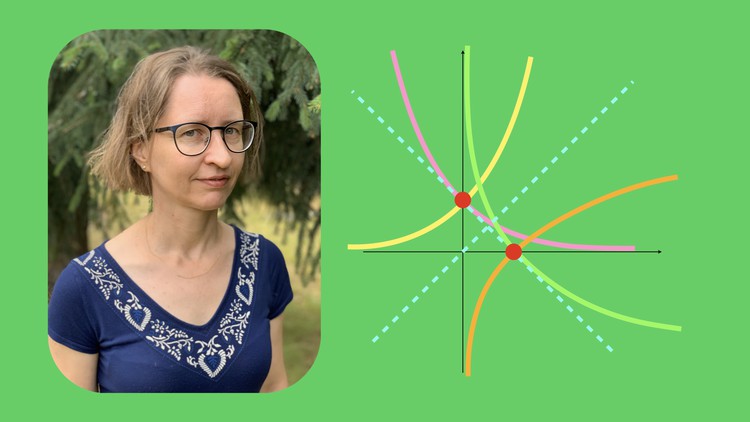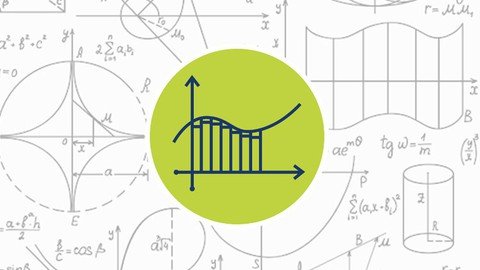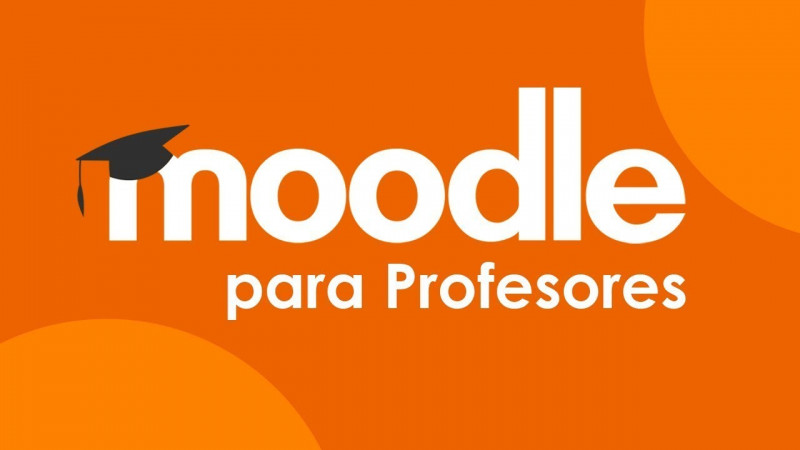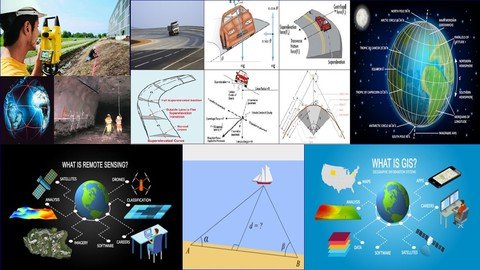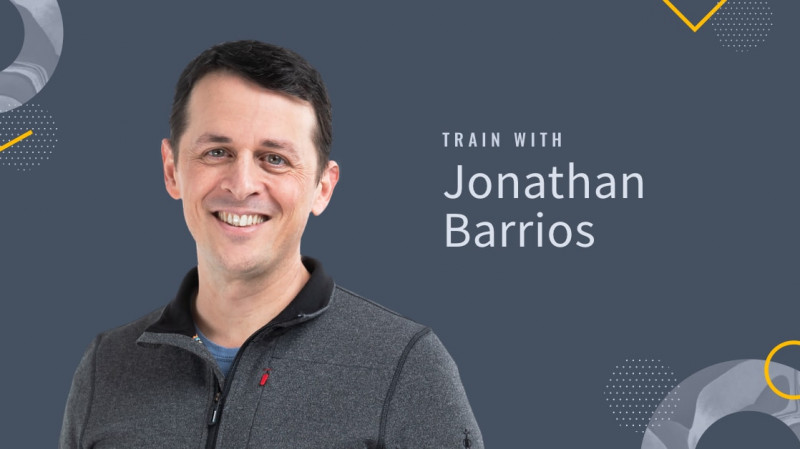Upsc General - Volume 1
Published 3/2023
MP4 | Video: h264, 1280x720 | Audio: AAC, 44.1 KHz
Language: English | Size: 87.58 GB | Duration: 100h 31m
Includes English Essay Papers, General Studies 1 and General Studies 2
What you'll learn
This course has more than 1,200 videos relating to General Studies of the prestigious UPSC examinations.
This course is prepared by a group of IAS officers belonging to the 1983 IAS batch, who have brought their years of expertise in the service and academics.
For students who like learning through video or audio, in addition to traditional methods, this product is very useful
This can also prove invaluable for working professionals/students to learn on the move or while commuting or even for the purposes of revision.
Requirements
PUC or SSLC
Description
The video course for Indian UPSC aspirants with 100+ hours of video lectures is an excellent resource for those preparing for the Civil Services Examination. The Civil Services Examination is one of the toughest exams in India and requires rigorous preparation to crack it. This video course offers a comprehensive and detailed study plan to help aspirants prepare for the exam.The course includes over 100 hours of video lectures, covering various topics like Indian Polity, Geography, Economy, History, and General Studies. The lectures are delivered by experienced and knowledgeable faculty members who have a deep understanding of the UPSC exam pattern and syllabus.Apart from UPSC, it can also be beneficial to any other regional civil service exam candidates. The study material is designed to help aspirants revise important topics and concepts quickly. The videos are designed to give aspirants a feel of the actual exam and help them assess their preparation level.The video course is accessible online, which makes it convenient for aspirants to study from anywhere and at any time. It is also available at an affordable price, making it accessible to a wider audience.In conclusion, the video course for Indian UPSC aspirants with 100+ hours of video lectures is a valuable resource for aspirants who are preparing for the Civil Services Examination. It provides a comprehensive study plan and helps aspirants assess their preparation level through mock tests. Use it while working or even commuting, thus making it a must-have for serious aspirants.
Overview
Section 1: Introduction
Lecture 1 Introduction
Lecture 2 02 Common Study Problems and Suggestions
Lecture 3 03 How to Improve Concentration While Studying
Lecture 4 04 Relaxation and Memory for Examination
Lecture 5 05 Sadique Pasha
Lecture 6 06 Civil Services Exam - Can I Do It By IAS Topper 15
Lecture 7 07 Dr Shah Faisal IAS -- J and K1
Lecture 8 08 Dr Shah Faisal- IAS--J and K2
Lecture 9 09 Inspirational Story Of An Ias Topper
Lecture 10 10 Meet Jand K's First Muslim Woman Qualifier For IAS
Lecture 11 11 Motivational Film To Civil Servants Ias Lbsnaa Mussoorie
Lecture 12 12 Polio Effected Girl Kranti Cracked Ias Exam In 2011-12
Lecture 13 13 IAS Probationers Of 2012 Batch Calls-on The President Part - II
Section 2: DISCLAIMER
Lecture 14 DISCLAIMER
Section 3: ENGLISH ESSAY PAPER
Lecture 15 01 Anti-corruption Movement In India
Lecture 16 02 Women s Empowerment In India-1
Lecture 17 03 Women Empowerment In India-2
Lecture 18 04 Constitutional And Legal Rights Of Women In India
Lecture 19 05 Welfare Schemes Of Government Of India For Women
Lecture 20 06 Population Growth Of India And Its Relevance-1
Lecture 21 07 Population Growth Of India And Its Relevance-2
Lecture 22 08 Population Growth Of India And Its Relevance-3
Lecture 23 09 Challenges of population explosion for india
Lecture 24 10 Global Warming And Green House Effect
Lecture 25 11 Environmental Impact Of Tourism In India
Lecture 26 12 Sustainable Development And Environment
Lecture 27 13 Tourism In India - Impacts On Economy And Society
Lecture 28 14 Food And Civil Supplies Situation In India
Lecture 29 15 Protection Of Human Rights In India
Lecture 30 16 What Is Leadership All About - Indian Context
Lecture 31 17 Effective Peoples Participation in Electoral Process
Lecture 32 18 Election Reforms
Lecture 33 19 Important Legal Provisions Of India
Lecture 34 20 Arguments For And Against Death Penalty
Lecture 35 21 Judicial Activism In India
Lecture 36 22 Judicial Review And Role Of Judiciary
Lecture 37 23 Indian Foreign Policy
Lecture 38 24 Terrorism
Lecture 39 25 Euthanasia
Lecture 40 26 Dances Of India
Lecture 41 27 Indian Festivals And Culture
Lecture 42 28 Poverty In India
Lecture 43 29 National Policy Of Electronics
Lecture 44 31 Privatization Of Education
Lecture 45 32 Review of Efforts of the Government to Improve Agri
Lecture 46 33 Role Of Multinational Corporations
Lecture 47 34 Public Sector Vs Private Sector
Lecture 48 35 White Revolution In India
Lecture 49 36 Suggestions for 12th Plan For Overall Development
Lecture 50 37 Peace Part-1
Lecture 51 38 Peace Part-2
Lecture 52 39 Important Aspects of Nuclear Deals
Lecture 53 40 Mental Health of the Country
Lecture 54 41 Child Labour in India
Lecture 55 42 Corruption - 12th Five Year Plan
Lecture 56 43 Juvenile Justice System
Lecture 57 44 Rural Urban Migration in India
Lecture 58 45 Skill Development-An Overview
Lecture 59 46 Mahatma Gandhi - My Life is My Message
Lecture 60 47 Issues on Persons with Disabilitie - PWDs
Lecture 61 48 Natural Rights, Human Rights, Fundamental Rights and Civil Rights
Lecture 62 49 Steps Taken By Government to Improve Gender Gap in India
Section 4: GENERAL STUDIES- 1. Indian History and Culture
Lecture 63 01 Chronology Of Principal Events In Indian History-1
Lecture 64 02 Chronology Of Principal Events In Indian History-2
Lecture 65 03 Chronology Of Principal Events In Indian History-3
Lecture 66 04 Indian History-Introduction Harappan Civilization
Lecture 67 05 All About Harappan Civilisation
Lecture 68 06 Describe Town Planning In Harappan Civilization
Lecture 69 07 Vedic Age
Lecture 70 08 Indian Ancient History Between 600BC To 600CE
Lecture 71 09 Cultural Growth In Ancient Society Between 600 BCE To 600 CE
Lecture 72 10 Ancient Hindu Scriptures Vedas
Lecture 73 11 Buddhism
Lecture 74 12 Sangam Age In South India
Lecture 75 13 Pre Mauryan Period, Religious Movements-Jainism
Lecture 76 14 Pre Mouryan Empire Persian Invasion
Lecture 77 15 Pre Mauryan Period, Emergence Of Mahajanapadas
Lecture 78 16 Mauryan Empire
Lecture 79 17 Age Of The Guptas
Lecture 80 18 Religion, Administrations Of Guptas
Lecture 81 19 Mauryas Empire Relations and Expansions, and Downfall
Lecture 82 20 Mauryan Administration
Lecture 83 21 Mouryan Empire Ashokas Policy Of Dhamma
Lecture 84 22 Mouryan Empire Sculptural Art
Lecture 85 23 Mouryan Empire Society And Religion
Lecture 86 24 India After Mauryas The Beginning Of Hinduism
Lecture 87 25 India After Mauryas, Sources, The Sungas
Lecture 88 26 India After Mouryas North Western India
Lecture 89 27 Harshavardhan
Lecture 90 28 Important Historical Events In Early Medieval India
Lecture 91 29 Medieval India Through The Eyes Of Foreign Travellers
Lecture 92 30 Bhakti Movement In India During 14th To 16th Century
Lecture 93 31 Mughal Empire
Lecture 94 32 Mughal Empire In India And Its Decline
Lecture 95 33 Emergence Of Marathas, Shivaji
Lecture 96 34 Delhi Sultanate
Lecture 97 35 Economy During Delhi Sultanate
Lecture 98 36 Vijayanagar Kingdom
Lecture 99 37 Vijayanagara Empire - The Most Powerful Empire
Lecture 100 38 Indian Economy In The Pre British Period
Lecture 101 39 Tribals, Dikus and the Vision of a Golden Age
Lecture 102 40 Sufi Movement
Lecture 103 41 From Trade To Territory-the East India
Lecture 104 42 Colonial Rule in-Bengal, Jharkhand And Bombay
Lecture 105 43 Colonialism And The City-the Story Of Imperial Capital
Lecture 106 44 Peasant Revolts Against British Raj
Lecture 107 45 Important Acts Of British Parliament on India
Lecture 108 46 Revolt Of 1857
Lecture 109 47 Social Reformers-women,caste And Reforms
Lecture 110 48 Weavers, Iron Smeletrs And Factory Owners-history
Lecture 111 49 Influence Of British On Indian Culture
Lecture 112 50 Mahatma Gandhi And His Struggle For Independence
Lecture 113 51 Fundamentals Of Indian Culture
Lecture 114 52 Folk And Tribal Art In India
Lecture 115 53 Dances Of India
Lecture 116 54 Indian Festivals And Culture
Lecture 117 55 National Symbols
Section 5: GENERAL STUDIES - 2. Freedom Struggle, Great Personalities -1. Freedom Struggle
Lecture 118 01 British Expansion In India
Lecture 119 02 Economic Exploitation Of British Rule
Lecture 120 03 Economic Impact Of British In India
Lecture 121 04 Acts Of British Parliament on India
Lecture 122 05 Judicial System In India During British Time
Lecture 123 06 Trade And Industry During British Period
Lecture 124 07 Indigo Or Blue Rebellion
Lecture 125 08 Partition Of Bengal
Lecture 126 09 Influence Of British On Indian Culture
Lecture 127 10 Outstanding Features Of Freedom Struggle
Lecture 128 11 Resistance To British Rule And Causes Of Revolt Of 1857
Lecture 129 12 Revolt Of 1857 Its Origin And Impact On Freedom Struggle
Lecture 130 13 Awadh -The Main Center Of Revolt Of 1857
Lecture 131 14 Peasant Movement And Uprisings After 1857
Lecture 132 15 Social Reforms During British Rule After 1857
Lecture 133 16 Reorganisation Of The British In India
Lecture 134 17 National Movement An Overall View
Lecture 135 18 Growth Of Indian Nationalism
Lecture 136 19 Indian National Congress
Lecture 137 20 Gurudwara Reforms And Temple-National Movement
Lecture 138 21 Role of Mahatma Gandhi in Home Rule movement
Lecture 139 22 Salt Satyagraha, Dandi March and Quit India Movement
Lecture 140 23 Home Rule Movement And Its Role In The Freedom Struggle
Lecture 141 24 Civil Disobedience Movement Led By M K Gandhi
Lecture 142 25 Karachi Session And Purna Swaraj
Lecture 143 26 Swadeshi Movement Part - 1
Lecture 144 27 Swadeshi Movement Part - 2
Lecture 145 28 Social Movements And Role Of Women In Freedom Struggle
Lecture 146 29 Non Cooperation Movement
Lecture 147 30 Rise Of Muslim League In Indian National Movment
Lecture 148 31 Round Table Conferences
Lecture 149 32 Rise Of Militant Nationalism
Lecture 150 33 Mountbatten Plan Partition
Lecture 151 34 Princely States And British Policy
Lecture 152 35 Partition Of India Memories And Experiences, Part - 1
Lecture 153 36 Partition Of India Memories And Experiences, Part - 2
Lecture 154 37 Indian Civil Service
Lecture 155 38 Modern Education During British Rule
Lecture 156 39 Role Of Press In India's Freedom Struggle
Lecture 157 40 Abdul Kalam Azad
Lecture 158 41 Aruna Asaf Ali
Lecture 159 42 Aurobindo
Lecture 160 43 B.R. Ambedkar
Lecture 161 44 Bhagwan Das
Lecture 162 45 Bidhan Chandra Roy
Lecture 163 46 Chakravarti Rajagopalachari
Lecture 164 47 Chidambaram Subramaniam
Lecture 165 48 Gopinath Bordoloi
Lecture 166 49 Indira Priyadarshini Gandhi
Lecture 167 50 Jayaprakash Narayan
Lecture 168 51 Jotiba Phule
Lecture 169 52 K. Kamaraj
Lecture 170 53 Khan Abdul Ghaffar Khan
Lecture 171 54 Lal Bahadur Shastri
Lecture 172 55 Lala Lajpat Rai
Lecture 173 56 Liaquat Ali Khan
Lecture 174 57 Maharshi Dhondu Keshav Karve
Lecture 175 58 Morarji Desai
Lecture 176 59 Pandit Govind Ballabh Pant
Lecture 177 60 Purushottam Das Tandon
Lecture 178 61 Rabindranath Tagore
Lecture 179 62 Rajendra Prasad
Lecture 180 63 Subhash Chandra Bose
Lecture 181 64 Varahagiri Venkata Giri
Lecture 182 65 Vinoba Bhave
Section 6: GENERAL STUDIES - 2. Freedom Struggle, Great Personalities - Great Personalities
Lecture 183 01 Shankaracharya
Lecture 184 02 Patanjali Maharshi
Lecture 185 03 Ramanujacharya
Lecture 186 04 Madhavacharya
Lecture 187 05 Santha Kabir
Lecture 188 06 Tulsidas
Lecture 189 07 Basaveshwara
Lecture 190 08 Tukaram
Lecture 191 09 Meera Bai
Lecture 192 10 Surdas
Lecture 193 11 Guru Naanak
Lecture 194 12 Eknath
Lecture 195 13 Anandamayi Ma
Lecture 196 14 Chaitanya Mahaprabhu
Lecture 197 15 Maharaja Ranjit Singh
Lecture 198 16 Maharshi Mahesh Yogi
Lecture 199 17 Mata Amrutanandamayi
Lecture 200 18 Mehar Baba
Lecture 201 19 Paramahamsa Yogananda
Lecture 202 20 Ramakrishna Paramahamsa
Lecture 203 21 Ramana Maharshi
Lecture 204 22 Shirdi Sai Baba
Lecture 205 23 Swamy Chinmayananda
Lecture 206 24 Swamy Dayananda Saraswati
Lecture 207 25 Swamy Shivananda Saraswati
Lecture 208 26 Swamy Vivekananda
Lecture 209 27 Pandurang Vaman Kane
Lecture 210 28 C V Raman
Lecture 211 29 Dr Zakir Hussain
Lecture 212 30 Mokshagundam Vishweshwarayya
Lecture 213 31 M S Subbulakshmi
Lecture 214 32 Jehangir Ratanji Dadabhoy Tata
Lecture 215 33 Sarvapalli Radhakrishnan
Lecture 216 34 Mother Teresa
Lecture 217 35 Rabindranath Tagore
Lecture 218 36 Pandit Ravi Shankar
Lecture 219 37 Ustad Bismillah Khan
Lecture 220 38 Pandit Bhimsen Joshi
Lecture 221 39 Osho
Lecture 222 40 Dalai Lama
Lecture 223 41 Jiddu Krishnamurthy
Lecture 224 42 Jaggi Vasudev
Lecture 225 43 Deepak Chopra
Lecture 226 44 Satyajit Ray
Lecture 227 45 Nelson Mandela
Lecture 228 46 Anna Hazare
Lecture 229 47 Aruna Roy
Lecture 230 48 Arvind Kejriwal
Lecture 231 49 Kurien The Father of White Revolution
Lecture 232 50 M G Ramachandran
Lecture 233 51 Rajendra Kumar Pachauri
Lecture 234 52 Rajiv Ratna Gandhi
Lecture 235 53 Sri Sri Ravishankar
Lecture 236 54 Sunita Narain
Lecture 237 55 Steve Jobs
Lecture 238 56 Two Indians Dominate the Software World
Section 7: GENERAL STUDIES - 3. Post-independence Modern Indian History
Lecture 239 01 Indian Politics after Independence in Nation-Building-1
Lecture 240 02 Indian Politics after Independence in Nation-Building-2
Lecture 241 03 Democratic Politics-an Era of One Party Dominent-1
Lecture 242 04 Democratic Politics-an Era of One Party Dominent-2
Lecture 243 05 Planned Development -Political And Social Perspective-1
Lecture 244 06 Planned Development-Political And Social Perspective-2
Lecture 245 07 Ambedkar's Legacy
Section 8: GENERAL STUDIES - 4. World- History, Geography and Natural Resources - India
Lecture 246 01 Geography Of The Indian Subcontinent
Lecture 247 02 Physiographic Divisions Of India
Lecture 248 03 Formation Of The Himalayas
Lecture 249 04 Ranges And Rivers Of Himalaya
Lecture 250 05 Monsoon
Lecture 251 06 El Nino And Its Effect On India
Lecture 252 07 Major River System And Rivers Of North India
Lecture 253 08 River Ganga
Lecture 254 09 River Yamuna
Lecture 255 10 River Narmada
Lecture 256 11 Peninsular Rivers Of India
Lecture 257 12 Significance Of Western Ghats
Lecture 258 13 Asian Brown Cloud
Lecture 259 14 Challenges of population explosion for india
Lecture 260 15 Population Migration
Lecture 261 16 Census Of Amenities
Lecture 262 17 Urbanization In India And Issues Involved
Lecture 263 18 National Urbanization Policy
Lecture 264 19 Integrated Development Of Small And Medium Towns
Lecture 265 20 House Listing And Housing Census, 2011
Lecture 266 21 Eastern Regions To Become Food Bowl
Lecture 267 22 Shifting Cultivation
Lecture 268 23 Major Crops Of India
Lecture 269 24 Drip Irrigation- Its Mechanism And Its Advantages
Lecture 270 25 Damanganga-Pinjal Link Project
Lecture 271 26 Industries Of India
Lecture 272 27 Industries Of India And Their Key Features
Lecture 273 28 Overall View Of Energy Sector In India
Lecture 274 29 Coal Mining In India
Lecture 275 30 Tehri Power Project
Lecture 276 31 Why India Is Prone To Draughts And Floods
Lecture 277 32 Wild Life Conservation In India
Lecture 278 33 Silent Valley National Park
Lecture 279 34 Distribution of Oceans and Continents Part-1
Lecture 280 35 Current Event Topics in Geography
Section 9: GENERAL STUDIES - 4. Physical and World Geography
Lecture 281 01 Geography as a discipline
Lecture 282 02 Branches of Geography
Lecture 283 03 Geography Terms - A Glossary
Lecture 284 04 Life on the Earth
Lecture 285 05 Evolution and Nature of Solar System
Lecture 286 06 Solar System And Earth
Lecture 287 07 Earth, Moon And Tides
Lecture 288 08 Formation Of The Earth
Lecture 289 09 Earths Crust
Lecture 290 10 Earth's Interior Plate Tectonics
Lecture 291 11 Interior of the Earth
Lecture 292 12 Earthquakes
Lecture 293 13 Distribution of Oceans and Continents1
Lecture 294 14 Distribution of Oceans and Continents2
Lecture 295 15 Distribution of Oceans and Continents3
Lecture 296 16 Latitude And Longitudes
Lecture 297 17 International Date Line
Lecture 298 18 Geomorphic Processes Part 1
Lecture 299 19 Geomorphic Processes Part 2
Lecture 300 20 Weathering
Lecture 301 21 Land Forms
Lecture 302 22 Landforms and Their Evolution-1
Lecture 303 23 Landforms and Their Evolution-2
Lecture 304 24 Landforms and Their Evolution-3
Lecture 305 25 Landforms and Their Evolution-4
Lecture 306 26 Formation And Types Of Mountains
Lecture 307 27 Climate - A Basic Introduction
Lecture 308 28 Water in The Atmosphere
Lecture 309 29 Atmospheric Circulation and Weather System
Lecture 310 30 Solar Radiation, Heat Balance and Temperature
Lecture 311 31 Isostacy
Lecture 312 32 Volcanoes
Lecture 313 33 Atmosphere
Lecture 314 34 Atmospheric Pressure
Lecture 315 35 Polar Climate
Lecture 316 36 Jet Stream
Lecture 317 37 Precipitation
Lecture 318 38 Thermal Anomaly
Lecture 319 39 River Systems
Lecture 320 40 All About Oceans
Lecture 321 41 Movements of Ocean Water
Lecture 322 42 Lakes-types Of Lakes, Structure and Formation
Lecture 323 43 Forest Resource
Lecture 324 44 Biosphere Reserves
Lecture 325 45 Agriculture - Types Of Cultivation
Lecture 326 46 Minerals And Rocks
Lecture 327 47 Important Minerals
Lecture 328 48 Important Power Sources And Countries
Lecture 329 49 Population Growth And Environmental Quality
Lecture 330 50 Polar Vortex
Section 10: GENERAL STUDIES - 4. Physical and World Geography - World History
Lecture 331 01 Origins of Islam Part 1
Lecture 332 02 Origins of Islam Part 2
Lecture 333 03 Origins of Islam Part 3
Lecture 334 04 Three Orders of Society in Europe-Fedualism-1
Lecture 335 05 Three Orders of Society in Europe-Fedualism-2
Lecture 336 06 Three Orders of Society in Europe-Fedualism-3
Lecture 337 07 French Revolution - Part-1
Lecture 338 08 French Revolution - Part-2
Lecture 339 09 Women Role In French Revolution
Lecture 340 10 Russian Revolution - Part 1
Lecture 341 11 Russian Revolution - Part 2
Lecture 342 12 Socialism In Europe
Lecture 343 13 Rise Of Nazism And Hitle-part-1
Lecture 344 14 Rise Of Nazism And Hitler - Part 2
Lecture 345 15 Cold War Era
Lecture 346 16 Cold War- World Politcs - PART-1
Lecture 347 17 Cold War- World Politcs - PART-2
Lecture 348 18 Cold War- World Politcs- PART-3
Lecture 349 19 End of Bipolarity - PART-1
Lecture 350 20 End of Bipolarity - PART-2
Lecture 351 21 End of Bipolarity - PART-3
Lecture 352 22 Alternative centres of power-part-1
Lecture 353 23 Alternative centres of power-part-2
Lecture 354 24 Us Hegemony Or Predominance In World Politics
Lecture 355 25 US Hegemony in World Politics Part 1
Lecture 356 26 US Hegemony in World Politics Part 2
Lecture 357 27 US Hegemony in World Politics Part 3
Lecture 358 28 Disintegration Of USSR
Section 11: GENERAL STUDIES - 4. Physical and World Geography - Population and Women Issues
Lecture 359 01 Key Features of Census of India, 2011
Lecture 360 02 Population Growth Of India And Its Relevance-1
Lecture 361 03 Population Growth Of India And Its Relevance-2
Lecture 362 04 Population Growth Of India And Its Relevance-3
Lecture 363 05 Population Migration
Lecture 364 06 Population Growth And Environmental Quality
Lecture 365 07 Aurat Ne Janam Diya Mardon Ko Sadhna 1958
Lecture 366 08 Women Empowerment In India-1
Lecture 367 09 Women Empowerment In India-2
Lecture 368 10 Constitutional And Legal Rights Of Women In India
Lecture 369 11 Women Reservation Bill
Lecture 370 12 Women And Child Development In India
Lecture 371 13 National Commission For Women
Lecture 372 14 Demographic Change, Age Structure and Ageing in India
Lecture 373 15 Migration - A Broad View
Lecture 374 16 Rural Urban Migration in India
Lecture 375 17 Top Woman Executives
Lecture 376 18 Gender Equality and Women Empowerment
Lecture 377 19 Govt Programs On-Gender Equality and Empowerment of Women
Section 12: GENERAL STUDIES II : 1. Constitution and Various Statutory, Regulatory
Lecture 378 01 Features Of Indian Constitution
Lecture 379 02 Preamble To The Constitution Of India
Lecture 380 03 Fundamental Duties And Fundamental Rights
Lecture 381 04 Directive Principles Of State Policy
Lecture 382 05 Framing Of The Constitution Part-1
Lecture 383 06 Framing Of The Constitution Part-2
Lecture 384 07 Emergency Provisions
Lecture 385 08 President - Functions, Powers
Lecture 386 09 Role Of Governor In Indian States
Lecture 387 10 Parliament, Rajya Sabha And Loksabha
Lecture 388 11 Lok Sabha
Lecture 389 12 Rajya Sabha
Lecture 390 13 Important Parliamentary Proceedings
Lecture 391 14 System Of Committee In The Parliament Proceedings
Lecture 392 15 Parliamentary Committees
Lecture 393 16 Previlages Of Members Of Parliament
Lecture 394 17 Procedure For Passing A Bill In Parliament
Lecture 395 18 Parliament Terms Concepts And Issues Part 1
Lecture 396 19 Parliament Terms Concepts And Issues Part 2
Lecture 397 20 Parliament Terms Concepts And Issues Part 3
Lecture 398 21 Member Of Parliament Local Area Development Scheme
Lecture 399 22 New Auditing Norms For Political Parties
Lecture 400 23 Local Government
Lecture 401 24 Panchayat Raj and Woman's Role
Lecture 402 25 Fundamentals Of Good Governance
Lecture 403 26 Reorganisation Of States
Lecture 404 27 Interstate Council
Lecture 405 28 Important National Regulatory Bodies and Their Functions
Lecture 406 29 Election Commission
Lecture 407 30 Comptroller And Auditor General
Lecture 408 31 Lokayukta
Lecture 409 32 National Green Tribunal
Lecture 410 33 Administrative Tribunal
Lecture 411 34 Central Bureau Of Investigation (CBI)
Lecture 412 35 Cabinet Secretariat
Lecture 413 36 Union Public Service Commission (UPSC)
Lecture 414 37 Indian Educational Governing Bodies
Lecture 415 38 Insurance Regulatory And Development Authority (IRDA)
Lecture 416 39 Official Language
Lecture 417 40 Political Theory-1
Lecture 418 41 Political Theory-2
Lecture 419 42 Freedom
Lecture 420 43 Negative and Positive Liberty
Lecture 421 44 Citizenship-1
Lecture 422 45 Citizenship-2
Lecture 423 46 Citizenship-3
Lecture 424 47 What are Rights
Lecture 425 48 Types of Rights
Lecture 426 49 Nationalism-1
Lecture 427 50 Nationalism-2
Lecture 428 51 Secularism-1
Lecture 429 52 Secularism-2
Lecture 430 53 Judicial Reforms - A Latest Review
Lecture 431 54 Nehru Yuva Kendra Sanghthan (NYKS)
Lecture 432 55 Social Security Schemes
Lecture 433 56 Central Vigilance Commission.
Lecture 434 57 Council of Ministers
Lecture 435 58 Jammu and Kashmirs Special Status Section 370
Lecture 436 59 Juvenile Justice System
Lecture 437 60 Relation Between Political Executive and Civil Servants
Lecture 438 61 Right to Legal Aid - A Constitutional Commitment
Lecture 439 62 Role and Status of Rajya Sabha in Indian Parliament
Section 13: GENERAL STUDIES II : 2. Structure, Organization and Functions
Lecture 440 01 Justice System Of India
Lecture 441 02 Types And Functions Of Some Important Judicial Institutions
Lecture 442 03 Supreme Court
Lecture 443 04 Improving The Justice Delivery System In The Country
Lecture 444 05 National Mission For Justice Delivery And Legal Reforms
Lecture 445 06 Lok Adalat, Family Court, Nyaya Panchayat, And Free Legal Aid
Lecture 446 07 Free Legal Aid
Lecture 447 08 Evolution Of Electoral System And Electoral Laws Of India
Lecture 448 09 Laws To Combat Terrorism, Public Interest Litigation Habeas Corpus
Lecture 449 10 Public Interest Litigation
Lecture 450 11 Writs
Lecture 451 12 Legal Provisions Related To Marriages In Indian Society
Lecture 452 13 Official Secrets Act Of India And Right To Information Act
Lecture 453 14 Validity Of RTE Act
Lecture 454 15 Some Important Judicial Procedures
Lecture 455 16 Performance Management In The Government
Lecture 456 17 Administrative Reforms And Public Grievance
Lecture 457 18 Citizenship Of India - Dual Citizenship, Voting Rights To Nri's
Lecture 458 19 Community Development Programme
Lecture 459 20 Important National Committees And Their Subjects
Lecture 460 21 Important Government Financial Transactions
Lecture 461 22 Indian Educational Governing Bodies
Lecture 462 23 Central Educational Institutions (Res) Amendment Bill
Lecture 463 24 Union State Relations
Lecture 464 25 Regional Aspiration-Politcs Part-1
Lecture 465 26 Regional Aspiration-Politcs Part-2
Lecture 466 27 Regional Aspiration-Politcs Part-3
Lecture 467 28 Rise of popular movements- Politcs PART-1
Lecture 468 29 Rise of Popular Movements - Politcs Part-2
Lecture 469 30 Reservation In Services In Central And State Governments
Lecture 470 31 Interstate Council
Lecture 471 32 National Academic Depository
Section 14: GENERAL STUDIES II : 3. Important Laws and Bills
Lecture 472 01 Armed Forces Special Powers Act
Lecture 473 02 Benami Transactions In Property
Lecture 474 03 Biotechnology Bill
Lecture 475 04 Cable Television Bill
Lecture 476 05 Central Educational Institutions (Res) Amendment Bill
Lecture 477 06 Child Sexual Abuse-pocso Act
Lecture 478 07 Civil Liability For Nuclear Damage Bill
Lecture 479 08 Compulsory Education
Lecture 480 09 Controversy On Section 66a Of IT Act
Lecture 481 10 Crime And Criminal Tracking Network In India
Lecture 482 11 Education Bills
Lecture 483 12 Food Policy And Food Security Bill
Lecture 484 13 Guardianship And Adoption Practices In India
Lecture 485 14 Indian Forest Amendment Bill, 2012
Lecture 486 15 Land Acquisition Bill
Lecture 487 16 Law On Electronic Delivery Of Govt Services
Lecture 488 17 Maintenance And Welfare Of Parents And Senior Citizens Act
Lecture 489 18 Mass Media And Law In India
Lecture 490 19 Mines And Minerals (Development And Regulations) Bill, 2011
Lecture 491 20 New Mining Bill
Lecture 492 21 Nuclear Safety Regulatory Authority Bill
Lecture 493 22 Persoal Laws In India A Broad View
Lecture 494 23 Pollution Control In India - Laws And Institutions
Lecture 495 24 Prisoner's Rights In Indian Legal System
Lecture 496 25 Procedure For Passing A Bill In Parliament
Lecture 497 26 Proposed Legislative Bills On Various Subjects, 2011
Lecture 498 28 Real Estate Bill Promises Transparency
Lecture 499 29 Right To Information
Lecture 500 30 Right To Privacy Bill
Lecture 501 31 River Basin Draft Bill Of The Centre
Lecture 502 32 Seed Bill Of 2011
Lecture 503 33 What Is Extradition
Lecture 504 27 Public Procurement Bill
Lecture 505 34 Women Reservation Bill
Lecture 506 35 Bureau of Indian Standards Bill
Lecture 507 36 Freeing the Undertrial.
Lecture 508 37 Ordinance Related to The Amendment in Representation of People Act
Lecture 509 38 Rights of the Persons with Disabilities Bill 2014
Lecture 510 39 Latest Acts and Bills
Lecture 511 40 Law Commission Report on Commercial Courts
Lecture 512 41 Need for Sports Law in India
Lecture 513 42 Ordinace in The Matter of MPs and MLAs
Lecture 514 43 Police Reforms
Lecture 515 44 Uniform Civil Code
Lecture 516 45 What is the Goods and Services Tax
Lecture 517 46 New Provisions to Promote Quality of Consumer Products and Services
Lecture 518 47 Vehicle Emission Norms for India
Lecture 519 48 National Food Security Act and Women Needs
Section 15: GENERAL STUDIES II : 4. Governemnt Policies, Welfare Schemes
Lecture 520 01 Welfare schemes and policies in India
Lecture 521 02 Efforts To Improve Governance
Lecture 522 03 An Overall View Of Defence Issues Of India
Lecture 523 04 An Overall View Of Primary And Secondary Education
Lecture 524 05 Black Money Stashed Abroad Efforts of Government
Lecture 525 06 National Water Policy-2012
Lecture 526 07 National Water Mission
Lecture 527 08 Drinking Water Facility for Villages
Lecture 528 09 National Rural Health Mission (NRHM)
Lecture 529 10 National Knowledge Network
Lecture 530 11 National Electric Mobility Mission Plan 2020(NEMMP 2020)
Lecture 531 12 National Mission On Education Through ICT
Lecture 532 13 National Mission On Libraries
Lecture 533 14 National Policy On Narcotic Drugs And Psychotropic Substances
Lecture 534 15 National Tribal Policy
Lecture 535 16 National Urban Health Mission
Lecture 536 17 National Urbanization Policy
Lecture 537 18 National Urban Livelihood Mission
Lecture 538 19 New Draft Telecom Policy
Lecture 539 20 Development In India And Regional Disparity
Lecture 540 21 Governments Efforts To Ensure Food Security For The Country
Lecture 541 22 Genetically Modified Crops and India s Agricultural Prosperity
Lecture 542 23 Government Of Indias Strategy To Boost Exports
Lecture 543 24 Report on Cultivation of Genetically Modified crops
Lecture 544 25 Higher Education Reforms In India
Lecture 545 26 Imbalance In Education In India
Lecture 546 27 Summary Of Sachar Committee Report
Lecture 547 28 Child Labour
Lecture 548 29 Elementary Education And Sarvashiksha Abhiyan
Lecture 549 30 Important Schemes In Education Sector
Lecture 550 31 Integrated Child Development Scheme
Lecture 551 32 How To Deal With Drug Abuse - A Holistic Approach
Lecture 552 33 Universal Health Coverage
Lecture 553 34 Health Care For The Elderly (NPHCE)
Lecture 554 35 Social Justice To All Initiatives Of The Government
Lecture 555 36 Consumer Protection And Measures Taken By Government
Lecture 556 37 Corporate Social Responsibility In CPSEs
Lecture 557 38 Corporate Social Responsibility of PSUs
Lecture 558 39 Empowering The Workers - Health Schemes Of Government
Lecture 559 40 Important National Committees And Their Subjects
Lecture 560 41 Financial Relations Between Centre And State
Lecture 561 42 Public Private Partnership In India
Lecture 562 43 National Innovation Council's Plans
Lecture 563 44 India Needs A Cloud Policy To Boost E-governance
Lecture 564 45 Jawaharlal Nehru National Urban Renewal Mission Jnnurm
Lecture 565 46 Rashtriya Krishi Vikas Yojana
Lecture 566 47 Kisan Credit Cards
Lecture 567 48 Bharat Nirman Volunteers - Agents Of Rural Awakening
Lecture 568 49 Indira Awas Yojana
Lecture 569 50 National Family Health Survey (NFHS-4), 2015-16
Lecture 570 51 Information Under RTI On Phone
Lecture 571 52 Shyama Prasad Mukherji Rurban Mission
Lecture 572 53 National Overseas Scholarship - Scheme Of Govt Of India
Lecture 573 54 North East Problem
Lecture 574 55 Rajiv Gandhi Grameen Vidyutkaran Yojana (rggvy)
Lecture 575 56 Right To Education (RTE) Efforts
Lecture 576 57 Schemes And Facilities For Senior Citizens
Lecture 577 58 Sports Development In Rural India (PYKKA)
Lecture 578 59 Unified Command To Fight Naxals
Lecture 579 60 Development-1
Lecture 580 61 Development-2
Lecture 581 62 Social Justice-1
Lecture 582 63 Social Justice-2
Lecture 583 64 Equality-1
Lecture 584 65 Equality-2
Lecture 585 66 Agriculture in India Part-1
Lecture 586 67 Agriculture Part 2
Lecture 587 68 Consumer Protection and Measures Taken by Govt
Lecture 588 69 Govt. Eases Foreign Investment Rules_Files.
Lecture 589 70 Land Acquisition and Related Issues.
Lecture 590 71 Measuring Backwardness - Raghuram Panel
Lecture 591 72 Minimum Support Prices (MSP) for Agricultural Produce
Lecture 592 73 National Mental Health Policy
Lecture 593 74 Problems of Public Distribution System
Lecture 594 75 Programme for Address the Maternal and Child Under-Nutition
Lecture 595 76 Skill Development-An Overview
Lecture 596 77 What went Wrong with Planning Commission
Lecture 597 78 Schemes and Initiative in Health Sector, 2016
Lecture 598 79 Start-up India
Lecture 599 80 Accessible India Campaign
Lecture 600 81 Digitally Connecting Rural India
Lecture 601 82 Common Services Centres CSCs in Rural Banking
Lecture 602 83 Development Schemes and Programs -Last Two Years
Lecture 603 84 Public Distribution System (PDS) Reforms
Lecture 604 85 Self Help Groups
Lecture 605 86 Sexual Harassment at the Workplace
Lecture 606 87 Sukanya Samriddhi Account
Lecture 607 88 Empowering People with Financial Inclusion
Lecture 608 89 Annual Survey of Education Report (ASER) 2016
Lecture 609 90 Defence Procurement Policy DPP- 2016
Lecture 610 91 Draft on National Policy for Women 2016
Lecture 611 92 Education in India Problems and Their Solutions
Lecture 612 93 Indias School Education Challenge
Lecture 613 94 National Action Plan for Children 2016
Lecture 614 95 National Disaster Management Plan 2016
Lecture 615 96 New IPR (Intellectual Property Rights) Policy
Lecture 616 97 Sehat -Social Endeavour For Health And Telemedicine
Lecture 617 98 Urban Mission Schemes
Section 16: GENERAL STUDIES II : 5. International Issues, Bodies and Indias Foreign Policy
Lecture 618 01 India's Important Foreign Policies And Programmes
Lecture 619 02 India s Agreements With Foreign Countries
Lecture 620 03 Bilateral Relations Of India With Foreign Countries
Lecture 621 04 India And United Nations And International Organisations
Lecture 622 05 International Organizations And The Role Of India
Lecture 623 06 Multilateral Relations Of India With International Organisations
Lecture 624 07 United Nations Development Programme In India Background
Lecture 625 08 UNICEF And Its Contribution To India
Lecture 626 09 India And World Trade Organization
Lecture 627 10 Foreign Trade Policy Of India- An Overall View
Lecture 628 11 Foreign Trade Policy In India i.e. External Sector
Lecture 629 12 Security In The Contemporary World And India's Position
Lecture 630 13 India And Neighbouring Countries-issues And Policies
Lecture 631 14 Contemporary South Asia
Lecture 632 15 India's Relations And Policies With American Countries
Lecture 633 16 Indo US Relations
Lecture 634 17 Alternative Centres Of Power And India - China Relations
Lecture 635 18 China-India Relations
Lecture 636 19 Disintegration Of USSR
Lecture 637 20 India's Relation And Politics With Europe
Lecture 638 21 South Asia and Relationship of India
Lecture 639 22 Eurozone Crisis and India
Lecture 640 23 India's Relations And Policies
Lecture 641 24 India And Afro-asian Rural Development Organization
Lecture 642 25 India's Initiatives For Developing Countries
Lecture 643 26 Durban Climate Talks What It Means For India
Lecture 644 27 Nuclear Deals Signed By India
Lecture 645 28 Afghanistan Problem and India Afganistan Relations
Lecture 646 29 Israel Palestine Conflict
Section 17: GENERAL STUDIES II : 7. Current National Events
Lecture 647 01 Important Terms, Concepts, Definitions
Lecture 648 02 Indian Economy - overall features
Lecture 649 03 Updated Overview of Indian Economy
Lecture 650 04 Change in Indian Economy
Lecture 651 05 Development Strategy in the Five Year Plans
Lecture 652 06 Government Programmes and Plans in Nutshell
Lecture 653 07 Economic Survey of India and Road Ahead
Lecture 654 08 Government Committed To Inclusive Growth Of Minorities
Lecture 655 09 Who is Poor
Lecture 656 10 12th Five Year Plan
Lecture 657 11 Suggestions For The 12th Plan For The Overall
Lecture 658 12 Some Critical Policy issues and Challenges
Lecture 659 13 Inclusive Growth for India
Lecture 660 14 Problems And Prospects Of Achieving Inclusive Growth
Lecture 661 15 Black Money and Money Laundering
Lecture 662 16 White Paper on Black Money
Lecture 663 17 Basic Features Of Indian Agriculture
Lecture 664 18 Unemployment Problem in India
Lecture 665 19 Low Carbon Economy Can India Achieve This
Lecture 666 20 Is Indian Economy Turning Around
Lecture 667 21 Understanding Fiscal and Monetary Policy
Lecture 668 22 Highlights of Economic Survey 2016-17
Lecture 669 23 What is Monetory Policy
Lecture 670 24 Monetary Policy of India
Lecture 671 25 Discussion on India's Monetary Policy
Lecture 672 26 Public Sector Policy of India
Lecture 673 27 Performance Of Public Sector Enterprises
Lecture 674 28 Privatisation And Disinvestment In India
Lecture 675 29 How to Make Indian Public Sector Units Efficient
Lecture 676 30 Schemes Of Government For Encouraging Central Public
Lecture 677 31 Revival and Restructuring of Sick CPSEs
Lecture 678 32 Kelkar Report Calls To Speed Up Divestment, Outlines Steps
Lecture 679 33 Measures to Control Inflation
Lecture 680 34 Petrolium Crisis And Price Hike In India
Lecture 681 35 Historical Background of Industrial Development in India
Lecture 682 36 An overview of Indian industry
Lecture 683 37 Industries of India
Lecture 684 38 Micro, Small and Medium Entrprises Sector
Lecture 685 39 Important Industrial Sectors Of India And Key Features
Lecture 686 40 Why Small Scale Industries Important in India
Lecture 687 41 India's Gem and Jewellery Industry
Lecture 688 42 E-Commerce
Lecture 689 43 Top Private Companies
Lecture 690 44 Top Public Sector Companies
Lecture 691 45 Difference Between Public Companies and Private Companies
Lecture 692 46 Concept Of Globalization
Lecture 693 47 Globalisation
Lecture 694 48 How Is The Growth In India And China Different
Lecture 695 49 Banking And Other Financial Instituions And Development
Lecture 696 50 Banking Sector And Its Role In Development
Lecture 697 51 Banking System in India and Its Transformation over the Years
Lecture 698 52 Swabhimaan - Banking Services
Lecture 699 53 Development Finance Institutions of India
Lecture 700 54 Important Financial Bodies
Lecture 701 55 RBI and its Role
Lecture 702 56 Cashless Payment from RBI
Lecture 703 57 Important Manufacturing and Industrial Products and Producers
Lecture 704 58 Foreign Trade Policy Of India- An Overall View
Lecture 705 59 India's Foreign Trade
Lecture 706 60 Role of Foreign Capital in India
Lecture 707 61 Foreign Direct Investment and Its Role in Indian Industries
Lecture 708 62 Foreign Exchange Management
Lecture 709 63 International Monetory Fund and India
Lecture 710 64 Role of IMF and India
Lecture 711 65 Foreign Investment in India
Lecture 712 66 Initiatives Taken To Attract Foreign Institutional Investors (FII)
Lecture 713 67 Changes In Foreign Individual Investment i.e.,FII Norms
Lecture 714 68 A Case for FDI in Retail Sector in India
Lecture 715 69 Trade Policy of India
Lecture 716 70 Bilateral Relations of India with Foreign Countries
Lecture 717 71 Impact of WTO on Indian Economy
Lecture 718 72 Progress of WTO and Rounds of Talks
Lecture 719 73 Exports Growth In Fy2011-12
Lecture 720 74 Government Of Indias Strategy To Boost Exports
Lecture 721 75 External Debts of India. Are We in a Bad Shape
Lecture 722 76 Draft National Policy On Electronics 2011
Lecture 723 77 Road map For Growth Of Electronics Industry
Lecture 724 78 National Auto Fuel Policy
Lecture 725 79 Nature of public Expenditure in India
Lecture 726 80 Public Distribution System
Lecture 727 81 Shipping in India Its Potential as alternate mode of transport
Lecture 728 82 Annual financial Statement of Government of India
Lecture 729 83 Budget Deficit
Lecture 730 84 Trends In India's Budget And Fiscal Deficits
Lecture 731 85 Micro Finance
Lecture 732 86 Role Of Direct And Indirect Taxes
Lecture 733 87 What Is Goods And Service TAX GST
Lecture 734 88 General Anti-Tax Avoidance Rules
Lecture 735 89 Dedicated Freight Corridors Of India
Lecture 736 90 Delhi Mumbai Industrial corridor (DMIC) Project
Lecture 737 91 Capital Markets and Gilt Edged Securities
Lecture 738 92 Derivatives, Futures And Options
Lecture 739 93 Infrastructure Debt Fund IDF
Lecture 740 94 Agro Sector is The Highest Priority
Lecture 741 95 Animal Husbandry and Fisheries in India
Lecture 742 96 Asian Development Bank
Lecture 743 97 Fourteenth Finance Commission on Fiscal Federalism
Lecture 744 01 An overview of Agriculture sector in India
Lecture 745 02 Efforts of Government to improve Indian Agriculture
Lecture 746 03 Food and Civil Supplies Situation in India
Lecture 747 04 Food Policy and Food Security Bill
Lecture 748 05 Governments Efforts To Ensure Food Security For The Country
Lecture 749 06 Food Safety And Standards Act Of 2006
Lecture 750 07 Child Malnutrition And What The Government Is Doing About It
Lecture 751 08 Hunger And Malnutrition Report
Lecture 752 09 Revitalizing Agriculture Through Improved Technology
Lecture 753 10 Schemes Related to Agriculture and Rural Development part 1
Lecture 754 11 Schemes Related to Agriculture and Rural Development part 2
Lecture 755 12 Organic Farming and Problems in Practicing in India
Lecture 756 13 Are Genetically Modified Crops A Solution-Agricultural Prosperity
Lecture 757 14 Eleventh Plan Strategy for Agriculture
Lecture 758 15 Floods and Draughts Management
Lecture 759 16 National Institute Of Agricultural Marketing
Lecture 760 17 Red Revolution
Lecture 761 18 Schemes Related to Agriculture and Rural Development part 3
Lecture 762 19 Schemes Related to Agriculture and Rural Development part 4
Lecture 763 20 Second Green Revolution
Lecture 764 21 Blue Revolution
Lecture 765 22 Suicide Of Farmers And Prevention Measures
Lecture 766 23 Trends in Agriculture development in India and Steps
Lecture 767 24 Vertical Farming To Be Introduced In India
Lecture 768 25 Indias Problem with WTO on Food Security Issues
Lecture 769 26 Irrigation in India.
Lecture 770 27 Key Facts Concepts of Agriculture in India
Lecture 771 28 Improving Foodgrain Management
Lecture 772 29 How to Revive Agriculture
Lecture 773 30 Interlinking of Rivers
Lecture 774 31 River Water Disputes Cauvery River Dispute
Lecture 775 01 A Summary of The Terms and Types of Ethical Theories-1
Lecture 776 02 A Summary of The Terms and Types of Ethical Theories-2
Lecture 777 03 Important Terms Related to Ethics
Lecture 778 04 Comprehensive Essay On Ethics
Lecture 779 05 Ethics, Values and Vision
Lecture 780 06 Moral Concepts and Theories in Ethics
Lecture 781 07 General Ethical Principles and Theories
Lecture 782 08 Code of Conduct from Ancient Vedic Principles
Lecture 783 09 Ethical Lessons from Religions
Lecture 784 10 Ethics and Religion-Are They Same
Lecture 785 11 Four Principal Methods of Understanding Ethics
Lecture 786 12 Ethics and Values of Gandhi
Lecture 787 13 What is Business Ethics
Lecture 788 14 Ethics and Integrity in Business and Industries
Lecture 789 15 Ethics In Medical Profession
Lecture 790 16 Problems and Scope in Understanding of Ethics
Lecture 791 17 Integrity-An Overall View
Lecture 792 18 Integrity and Ethics In The Civil Service
Lecture 793 19 Conduct Rules for Governemnt or Public Servants
Lecture 794 20 Seven Principles of Public Life by Lord Nolan
Lecture 795 21 Aptitude An Overview
Lecture 796 22 Concept Of Social Responsibility-Role Of Business
Lecture 797 23 Official Secrets Act and RTI Act
Lecture 798 24 Quotable Quotes Of Mahatma Gandhi
Lecture 799 25 Role of Western Values in Contemporary Indian Society
This course is intended for all UPSC aspirants who either do not have the time to study during their existing schedule or would like to learn on the move through audio/video format.,However, this does not takeaway anything in terms of quality and comprehensiveness of the syllabus, as it covers a total of 17 categories.,This course also caters to any regional civil service examinations











